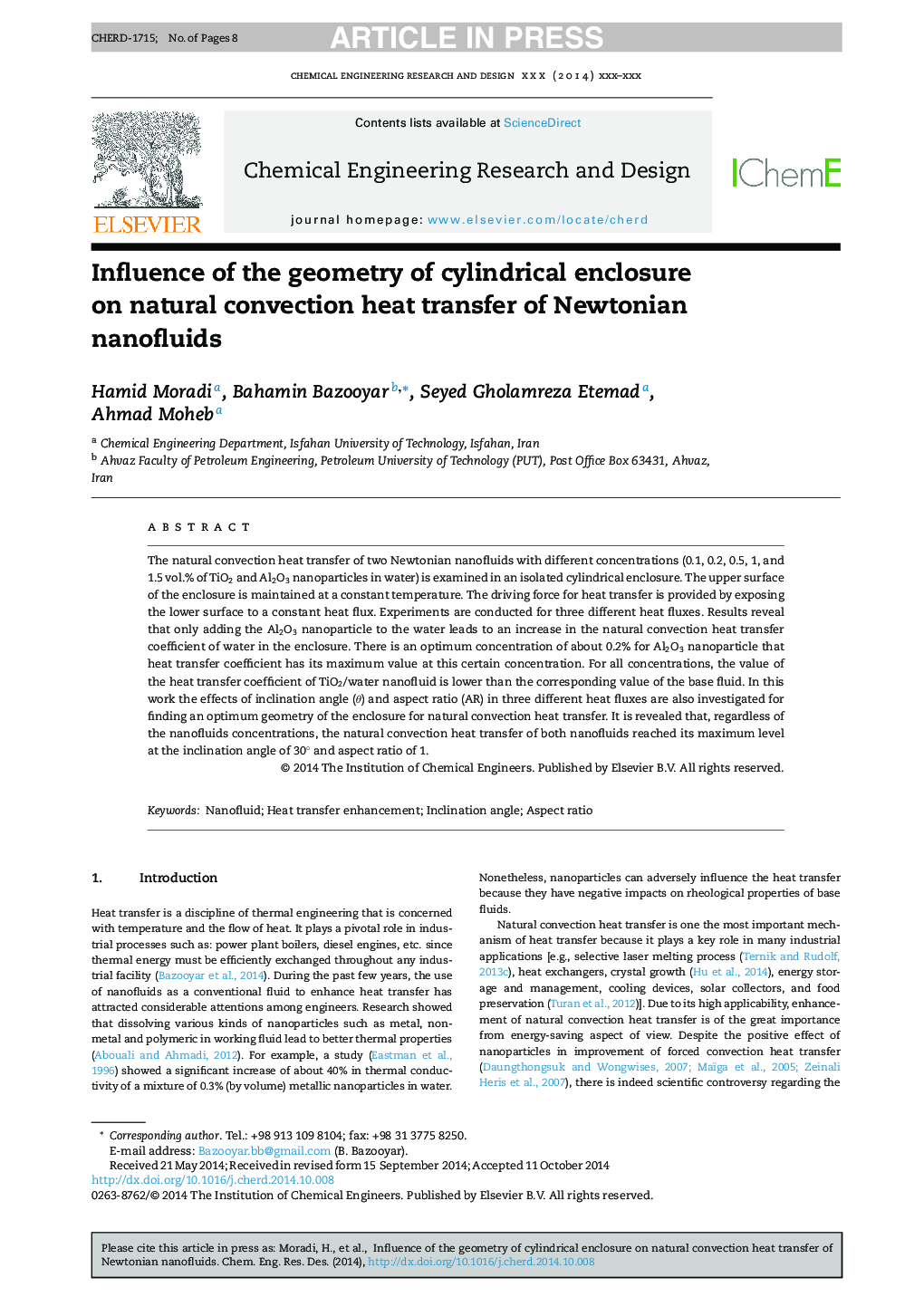| Article ID | Journal | Published Year | Pages | File Type |
|---|---|---|---|---|
| 620449 | Chemical Engineering Research and Design | 2015 | 8 Pages |
Abstract
The natural convection heat transfer of two Newtonian nanofluids with different concentrations (0.1, 0.2, 0.5, 1, and 1.5 vol.% of TiO2 and Al2O3 nanoparticles in water) is examined in an isolated cylindrical enclosure. The upper surface of the enclosure is maintained at a constant temperature. The driving force for heat transfer is provided by exposing the lower surface to a constant heat flux. Experiments are conducted for three different heat fluxes. Results reveal that only adding the Al2O3 nanoparticle to the water leads to an increase in the natural convection heat transfer coefficient of water in the enclosure. There is an optimum concentration of about 0.2% for Al2O3 nanoparticle that heat transfer coefficient has its maximum value at this certain concentration. For all concentrations, the value of the heat transfer coefficient of TiO2/water nanofluid is lower than the corresponding value of the base fluid. In this work the effects of inclination angle (θ) and aspect ratio (AR) in three different heat fluxes are also investigated for finding an optimum geometry of the enclosure for natural convection heat transfer. It is revealed that, regardless of the nanofluids concentrations, the natural convection heat transfer of both nanofluids reached its maximum level at the inclination angle of 30° and aspect ratio of 1.
Related Topics
Physical Sciences and Engineering
Chemical Engineering
Filtration and Separation
Authors
Hamid Moradi, Bahamin Bazooyar, Seyed Gholamreza Etemad, Ahmad Moheb,
